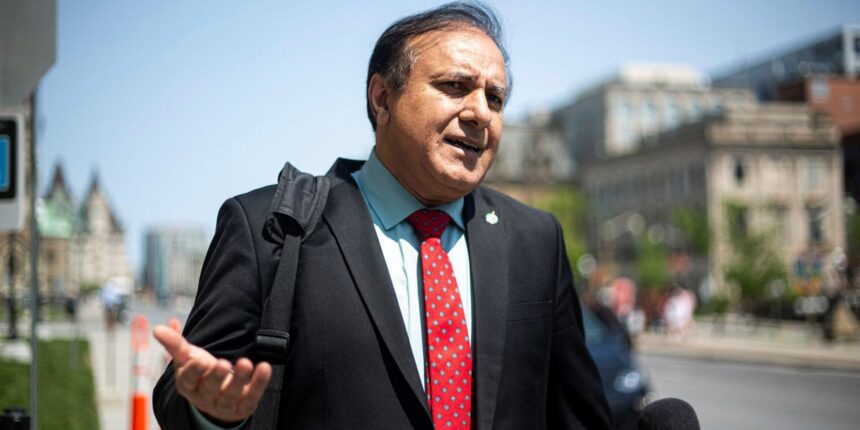Recent gains in diversity and equity within Canada’s federal public service could be undermined by looming budget restraints, according to newly released Treasury Board data. The annual report on workforce diversity shows modest but meaningful improvements across several underrepresented groups, even as departments brace for the spending reviews announced in Finance Minister Chrystia Freeland’s spring budget.
The Treasury Board’s 2024-2025 Public Service Employment Equity Report indicates Indigenous representation in the federal workforce has increased to 5.7 percent, up from 5.2 percent last year. Women now occupy 56.3 percent of executive positions across government, marking a three-point increase over five years. Visible minorities represent 21.8 percent of the federal workforce, approaching their 22.3 percent availability in the Canadian labour market.
“We’ve made steady progress toward a public service that better reflects the Canada it serves,” said Treasury Board President Anita Anand during a press conference at the Sir John A. Macdonald Building. “But these gains didn’t happen by accident—they required dedicated programs, targeted recruitment, and retention strategies that need ongoing support.”
The report highlights several successful initiatives, including the Indigenous Career Pathways Program, which placed over 450 Indigenous graduates in permanent positions, and mentorship programs that have helped boost visible minority representation in management ranks by 4.2 percentage points since 2020.
What has many current and former public servants concerned, however, is how these diversity programs will fare under the government’s plans to trim $15.8 billion in spending over the next five years.
Darlene Burns, who recently retired after 28 years in the public service and now advocates for Indigenous employees, expressed her worries during a town hall meeting in Gatineau last week. “These kinds of initiatives are often the first to go when the squeeze comes,” she told me, gesturing to a roomful of nodding colleagues. “And the progress we’ve made can quickly slide backward.”
Her concerns aren’t without merit. During previous rounds of restraint, diversity programs saw disproportionate cuts. Following the 2012 Deficit Reduction Action Plan, representation rates for persons with disabilities declined for three consecutive years, according to Public Service Commission data.
The Black Employees Network, representing thousands of Black public servants, has already raised flags about how budget constraints might affect their community. “When departments are told to do more with less, the ‘more’ rarely includes equity work,” said Marcus Jean, the network’s spokesperson.
Jean points to specific concerns about how funding reductions might impact the recently established Centre on Diversity and Inclusion, which coordinates anti-racism initiatives across departments. The Centre received $12 million in initial funding when launched in 2020, but its mandate is up for renewal this fiscal year.
Some senior officials insist that diversity won’t be sacrificed. Deputy Minister of Public Services and Procurement Canada, Paul Thompson, told a parliamentary committee last month that “equity initiatives will remain a priority even as we identify efficiencies.”
But the numbers tell a more complex story. According to budget documents, departments have been instructed to absorb roughly $600 million in salary increases without additional funding, creating pressure to reduce staffing levels through attrition.
“The reality is that when hiring freezes take effect, it’s the newer employees who are most vulnerable—and many of those newer hires came through diversity initiatives,” explains Dr. Melissa Williams, professor of public administration at Carleton University.
Williams’ research shows that in previous cycles of government restraint, gains in workforce diversity took approximately three times longer to rebuild than they took to dismantle.
The challenge facing the public service isn’t just about raw numbers. Many equity-seeking groups report persistent barriers to advancement. The latest Public Service Employee Survey revealed that 19 percent of visible minority respondents and 22 percent of persons with disabilities reported experiencing discrimination at work—significantly higher than the average of 12 percent.
“Representation is just the starting point,” says Yasmine Ahmed, executive director of the Canadian Institute for Diversity and Inclusion. “The real measure is whether these employees stay, feel valued, and have opportunities to advance. That requires ongoing investment in workplace culture.”
Some departments have found creative approaches to maintain momentum despite fiscal constraints. Environment and Climate Change Canada has embedded equity requirements into regular performance reviews for managers. The Canada Revenue Agency has redistributed mentorship responsibilities across its executive cadre rather than relying on dedicated positions.
Provincial public services, which have faced similar pressures, might offer lessons. The Ontario Public Service maintained most diversity initiatives during its 2019 efficiency exercise by making them core responsibilities rather than separate programs.
Treasury Board officials note that demographic shifts make diversity initiatives not just a matter of social justice but operational necessity. With nearly 40 percent of public servants eligible to retire within the next decade, departments must draw from the broadest possible talent pools to replace them.
“In many ways, this is about future-proofing the public service,” said Anand. “We can’t afford to lose momentum if we want a workforce that’s equipped to tackle increasingly complex challenges.”
For Daniel Shapiro, who joined the public service through an accessibility recruitment program two years ago, the debate feels personal. “I finally found a workplace where my skills are valued more than my disability,” the policy analyst told me during a break at last week’s National Accessibility Week event. “But I’m still on term status, not permanent. Budget cuts make me wonder if I’ll get to stay.”
As parliamentarians prepare to scrutinize departmental spending plans this fall, the question remains whether Canada’s public service can maintain its diversity momentum while navigating fiscal restraint—or whether budget cuts will disproportionately affect those who’ve only recently found their place in government corridors.






